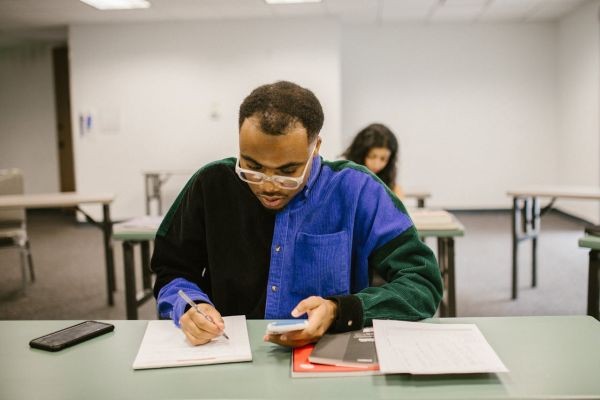Language is not only a tool for communication but also a bridge that connects people across cultures and experiences. In today’s digital world, learning a language has become more dynamic and interactive than ever before. The traditional methods of memorization and repetition are now complemented by modern technological tools that make learning both enjoyable and effective. This combination of technology and pedagogy has given rise to a new approach known as multimedia assisted language learning. It brings together audio, video, text, and interactive platforms to create an environment that helps learners understand, practice, and retain new languages more efficiently.
Understanding Multimedia Assisted Language Learning
The early stages of language learning often involve challenges such as pronunciation, grammar accuracy, and vocabulary retention. Multimedia assisted language learning addresses these issues by providing learners with multiple sensory inputs. For instance, watching a video in the target language helps with pronunciation and listening comprehension, while interactive exercises reinforce grammar and vocabulary. This multidimensional exposure allows learners to engage with the language naturally rather than relying solely on textbooks or lectures. As a result, learners develop stronger communication skills and greater confidence in using the language in real-life contexts.
Adaptability and Personal Learning Styles
One of the key strengths of multimedia assisted language learning lies in its adaptability. Different learners have different preferences—some learn better through visual aids, while others prefer listening or reading. Multimedia platforms integrate all these learning styles, giving every learner a personalized experience. For example, a student can watch a documentary in the target language, read the subtitles for understanding, and then complete comprehension exercises based on the same content. This process not only improves language proficiency but also enhances cultural understanding, as multimedia often introduces learners to the social and emotional contexts of language use.
Motivation and Engagement through Multimedia
The role of motivation in learning cannot be ignored. Multimedia assisted language learning makes lessons engaging and reduces monotony by turning them into interactive experiences. Games, quizzes, and storytelling applications stimulate curiosity and encourage learners to continue practicing regularly. In a traditional classroom, motivation often depends on the teacher’s energy or the quality of materials. However, in multimedia-based environments, the learner becomes an active participant, discovering the language through exploration rather than memorization. This shift increases long-term retention and overall satisfaction with the learning process.
Accessibility and Flexibility in Modern Learning
In recent years, the accessibility of digital tools has made multimedia assisted language learning more widespread. Learners can now access mobile apps, online courses, podcasts, and virtual language exchange programs from anywhere in the world. This flexibility has opened doors for people who cannot attend physical classes due to time or geographical constraints. At this stage, many online learners also explore different ways to manage their workload. Some may even search for services like Pay Someone to Do My Online Classes when they struggle to balance studies and responsibilities. While such choices reflect the challenges of online learning, they also emphasize how digital education has transformed into a flexible system that accommodates various lifestyles.
Collaboration and Global Interaction
Beyond flexibility, multimedia assisted language learning fosters collaborative growth. Many platforms offer discussion forums, live chat sessions, and interactive projects that connect learners with peers around the globe. This interaction helps them practice real conversations and gain exposure to diverse accents and dialects. Furthermore, multimedia tools can simulate real-life scenarios, such as ordering food, traveling, or attending meetings, which enhances practical communication skills. Such activities make language learning less abstract and more applicable to daily life.
Support for Teachers and Instructors
Teachers also benefit greatly from multimedia assisted language learning. The use of videos, slides, and digital storytelling enhances teaching quality and keeps students engaged. Teachers can assess progress more effectively through multimedia-based quizzes and feedback systems. Moreover, digital tracking tools allow instructors to identify areas where students struggle, enabling targeted improvement. This integration of technology in education has made teaching more efficient, data-driven, and personalized.
Improved Memory and Retention
Another remarkable aspect of multimedia assisted language learning is its impact on memory retention. Studies have shown that learners retain information better when they receive it through multiple senses. When visuals, sounds, and text work together, the brain forms stronger associations with the material. This multisensory experience not only improves short-term understanding but also helps long-term recall. Learners who practice through multimedia often find it easier to recall words, phrases, and grammar structures during real-life communication.
Cultural Immersion through Multimedia
Cultural immersion is another advantage of this learning method. Multimedia assisted language learning resources such as films, songs, podcasts, and news clips expose learners to cultural nuances, humor, and expressions that cannot be fully captured in textbooks. This exposure helps learners think in the target language and develop a deeper appreciation for its speakers. Language learning thus becomes more than an academic pursuit—it becomes a gateway to understanding global cultures and perspectives.
Challenges and Learner Responsibility
However, like any learning method, multimedia assisted language learning also requires discipline. While technology offers flexibility, learners must manage their time effectively and stay consistent. The abundance of resources can be overwhelming, so learners should focus on structured and meaningful content. When used thoughtfully, multimedia tools can transform learning from a difficult task into an exciting journey of discovery.
Conclusion
In conclusion, multimedia assisted language learning represents a positive evolution in education. It combines technology, creativity, and human interaction to make language acquisition more effective and enjoyable. By addressing diverse learning styles, promoting motivation, and providing global connectivity, this approach empowers learners to reach their full potential. As technology continues to advance, multimedia will remain a central element in shaping the future of language education—making it more inclusive, interactive, and inspiring for all.

